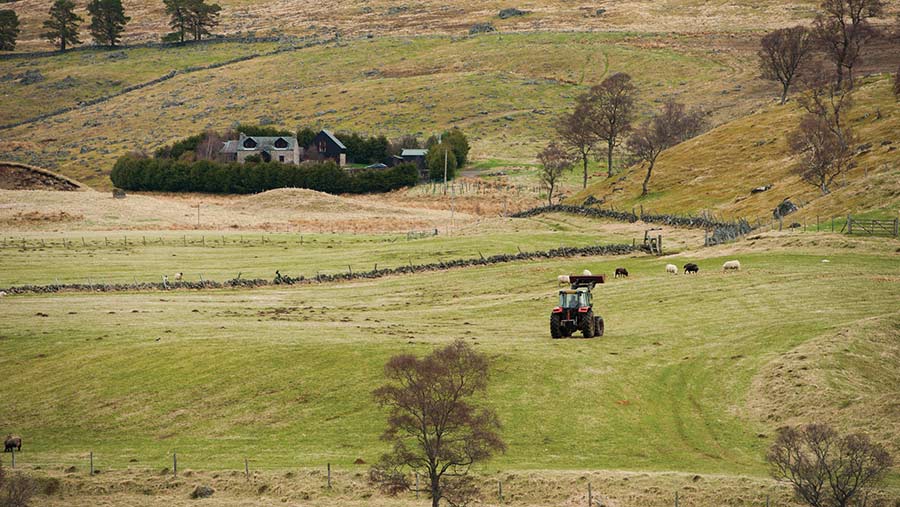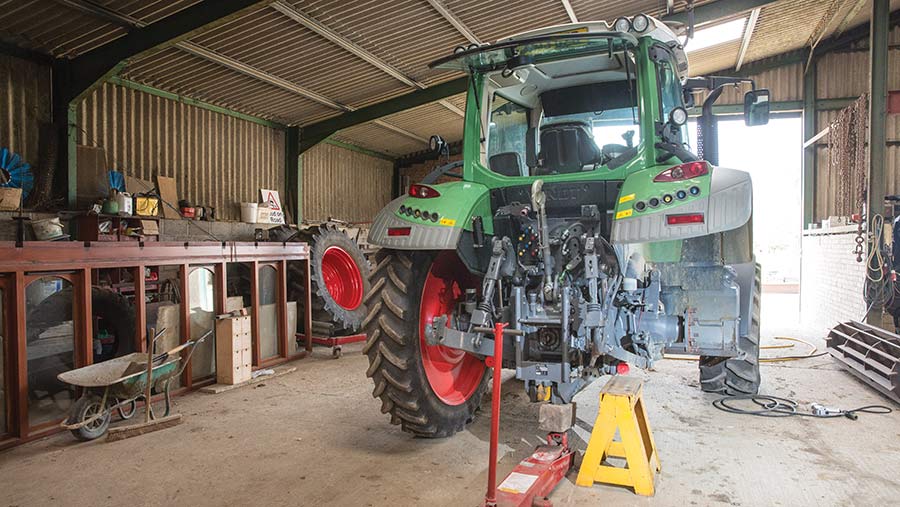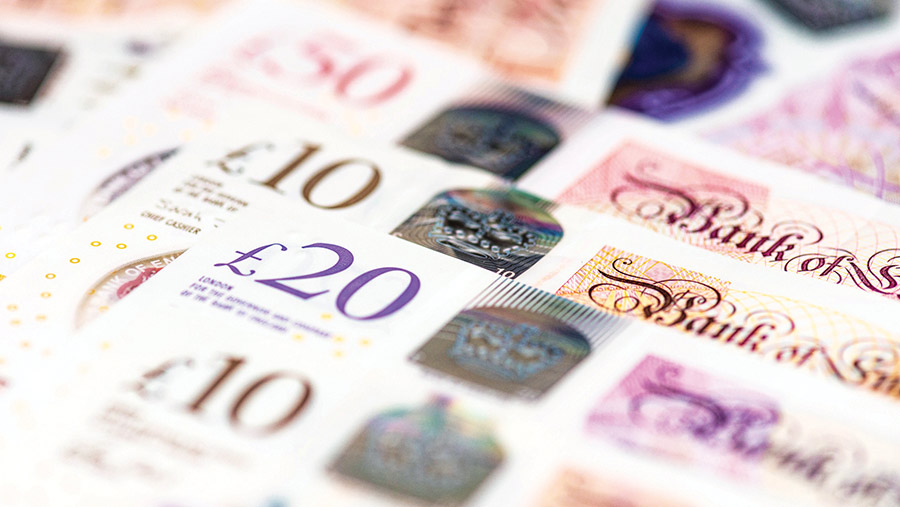Year-end tax tips to efficiently use reliefs and allowances
 © iStockphoto/arodPEI
© iStockphoto/arodPEI The end of the 2023-2024 tax year brings the need for the usual checks to make sure reliefs have been claimed correctly, and tax saving investments made where they are justified and affordable.
Spending should be reviewed and where appropriate and timescales allow, any further planned investment might be brought forward.
See also: HMRC 2024 basis reforms – what farmers need to know
Capital investment
This could include capital investment such as in machinery and equipment.
Mark Chatterton, director and head of agriculture at accountant Duncan & Toplis suggests: “For most arable farms, the current year will be more profitable than the 2024-2025 year, so if you’re planning on buying a new tractor, for example, it would be wise to get it invoiced in March to bring it into the current tax year.”
The same applies to getting repairs done so that they come into the current year if it is advantageous to bring them forward, and cashflow allows.
HMRC basis year reform
The current tax year is also a transition period for a move by HMRC to tax sole traders and partnerships on the basis of profits or losses made in the tax year, rather than on those reported for the accounting year of the business or individual ending in the tax year (see “Basis period reform – income tax”).
This also brings considerations for capital spending as well as longer-term issues.

© Tim Scrivener
Pensions
In April 2023 the annual allowance each individual can contribute to a personal pension was increased to £60,000, including company pension contributions.
For every £80 paid in, HMRC gives £20 in tax relief. Those on the 40% and 45% income tax rates can also reclaim up to an additional £20 or £25 tax relief.
“Pensions can help reduce your income, which in turn, can trigger other tax benefits.
“For instance, reducing income below £50,000 may allow you to avoid the child benefit tax charge,” advises Sean McCann, a chartered financial planner at NFU Mutual.
“Staying out of the 40% band by reducing income below £50,270 also means you can benefit from £1,000 of tax-free interest from savings accounts, which falls to £500 once your income goes to £50,271 or more (See “savings” section).
“Similarly, if your spouse or civil partner has income below £12,570 and you can keep your income after pension contributions below £50,270, you become eligible for the marriage allowance, which can be worth £252 in this tax year.”
Those with sufficient earnings can also pay an increased amount into their pension before 5 April, by taking advantage of unused pension allowances from the previous three tax years.
Pension contributions can be paid by a company to an individual’s personal pension with no tax charge if the contribution to the company’s activities justify it, says Peter Griffiths, tax director at accountant Hazlewoods.
This can be a further tax-efficient way of extracting profits from a company.
“Pension contributions are very much now back on the agenda, without the need to buy an annuity once an individual reaches the age of 75.
“In the right circumstances, it can also be possible for an individual to pass their pension fund to the next generation with no tax liability,” says Peter.
Capital gains tax exemptions to fall
Each individual has an annual capital gains tax (CGT) exemption, but these are being cut, having fallen from £12,300 to £6,000 in April 2023, with a further cut to £3,000 from 6 April 2024.
“If you have shares or investment funds that have increased in value, you could choose to cash in or switch funds to realise gains up to the amount of your available exemption,” says Sean.
“This is a tactic employed by many who reinvest the proceeds into their Individual Savings Account (ISA) or pension.”
However, there are rules preventing realisation of a gain by selling shares or an investment fund, and buying back the same share or fund within 30 days, he points out.
“Those worried about selling and being out of the market often get around this problem by their spouse buying the shares or fund they have disposed of.
“As married couples and civil partners can transfer shares and investment funds between them without triggering a CGT bill, it may be possible to use two tax-free exemptions.”
Tax-free gifts, capital gains and capital losses
Individuals can make gifts of up to £3,000 free of inheritance tax (IHT) each year. If the previous year’s allowance has not been used, it is also available in the current year.
However, some gifts outside of these allowances will have capital gains attached to them, points out Catherine Vickery, tax consultant with accountant Old Mill.
The tax on these gains can be mitigated by offsetting any capital losses made elsewhere.
For example, BPS entitlements which were bought, gifted or inherited all have a value at the date they were purchased or transferred. That value is now nil, creating a capital loss.
“So if you are considering a gift carrying a gain, the loss of BPS value can be used to offset or reduce the CGT liability,” says Catherine.
“The loss in the entitlement value will be declared on the 2023-2024 tax return, but in many cases where a gift is being considered, it’s as well to make the gift so that the seven-year IHT clock starts ticking.
“After seven years have passed since the date of the gift, it is is free of IHT.”
Even where no gift is currently planned, it will be worth banking the BPS entitlement capital loss by declaring it on the 2023-2024 tax return, as it can be carried forward indefinitely and used against any future capital gains, whether in gifts or otherwise, says Catherine.

© iStockphoto/georgeclerk
Tax on savings
Basic rate taxpayers can earn £1,000 of interest tax-free each year, while the limit is £500 for higher rate taxpayers.
For every £100 of interest earned above these amounts, a basic rate taxpayer is left with £80, and a higher rate taxpayer £60.
Current higher interest rates mean that those who have, in recent years, not had to pay income tax on savings interest may now be within that net.
However, each taxpayer can invest up to £20,000 in an ISA each year.
No income tax is due on the interest or dividends you receive from an ISA, and any profits from investments are free of CGT.
“Those tax savings can make a big difference over time.
“For example, a higher rate taxpayer would have paid £2,611 more in tax after 10 years if they invested £20,000 into a savings account paying 5% a year, compared to an ISA paying the same rate,” says Sean McCann.
“Those willing to invest for a minimum of five to 10 years should consider a stocks and shares ISA that offers the potential for better returns, with no income tax or CGT on any growth.”
Basis period reform – income tax
The move to tax sole traders and partnerships on the basis of profits or losses made in the tax year rather than on those reported for the accounting year of the business or individual is a big change, and will affect each business differently.
All sole traders and partnerships need to assess their position on this, says Peter Griffiths.
Transitional rules allow the tax liability generated by transitional period profits to be spread over five tax years, starting with this current transition year.
“The timing of significant capital expenditure that is eligible for capital allowances needs to be considered.
“For some businesses it may be tax beneficial to reduce the profits that could then be spread over five years, to ease the impact of transition to the new system.
“But for some businesses, it may be advantageous to keep them as high as possible.”
Dividend payments by companies
Many farming businesses now operate through a company structure, or have a partnership alongside a company.
“To ensure that profits can be extracted by dividend from a company in a tax-efficient manner, shareholdings need to be of different classes, so that different dividends can be paid to different shareholders,” says Peter Griffiths.
“This will be useful if some shareholders are not fully utilising their basic rate tax band in any tax year.”
